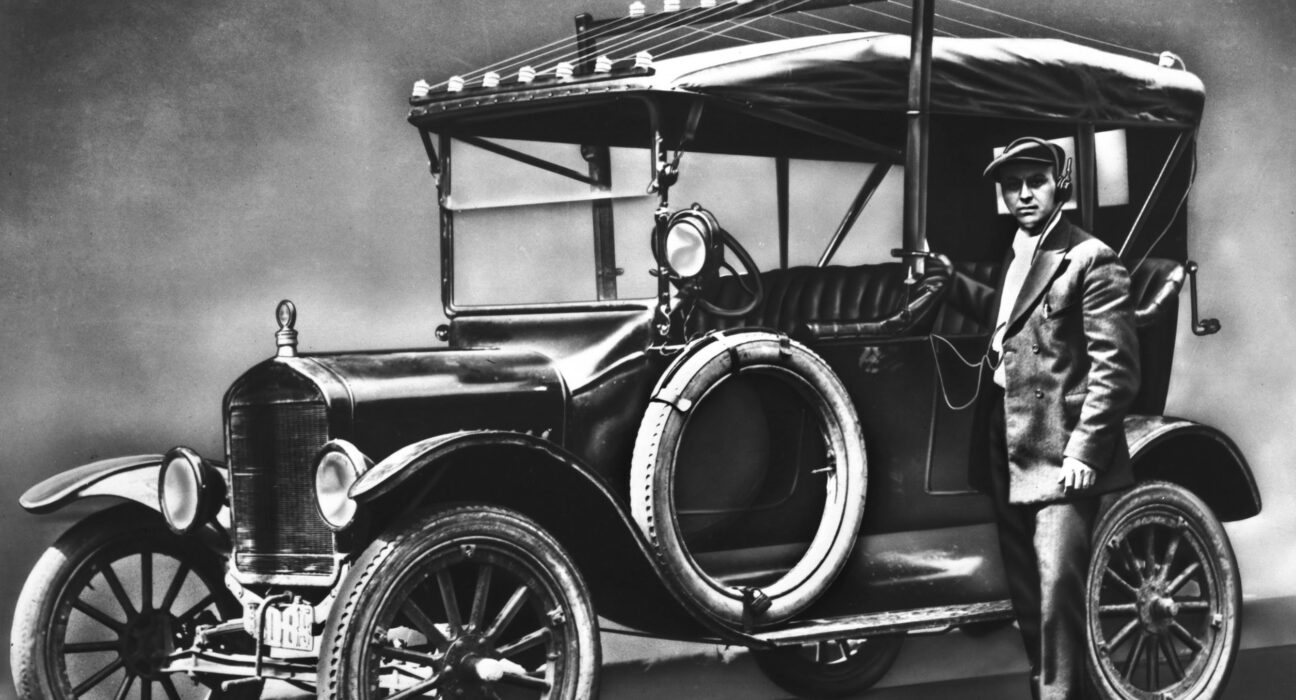National Radio Broadcasting Day
Discover the rich history of radio in Thailand with Ticy City as we journey back exactly 94 years ago to February 25, 2024. This significant day marked the commencement of radio broadcasting in Thailand, thanks to the visionary leadership of His Royal Highness Prince Burachat Chaiyakorn, Ministry of Transport of Thailand (during the 7th reign), often hailed as the father of the Thai radio industry. The inaugural radio station, named “4 PJ,” was established at the post office building in Pak Klong Ong Ang, Wat Ratchaburana Subdistrict.
On this National Broadcasting Day, Ticy City invites you to explore the captivating history of “radio” entertainment in cars through the digital treasure trove, the ‘Ford Heritage Vault.’
Did you know that before the era of touchscreens, car radios were bulky, occupying the entire backseat area? Over a century ago, the concept of in-car entertainment systems, now synonymous with “radio,” was vastly different.
The roots of today’s car audio industry trace back to 1920, ignited by the radio broadcast of U.S. presidential election results by KDKA radio station. This innovation not only provided rapid news updates but also kept travelers informed on the go. By 1922, car manufacturers introduced portable radios, albeit large and pricey, comprising a significant portion of the car’s cost.
Rapid technological advancements addressed issues like radio interference and oversized batteries within a decade. Car manufacturers even integrated antennas into the windshield, exemplified by the iconic Ford dashboard radio compartment. In 1933, 31 out of 33 car manufacturers offered radios as optional extras, with Ford leading the way by making radios standard features.
In1929, Charles Thomas, Ford’s Acoustical Laboratory manager, conducted groundbreaking experiments by installing radios in Ford Model A cars. This laid the foundation for Ford’s development of prototype cars with built-in radios.
Ford’s first in-car radio, crafted by Grigsby-Grunow in 1932, adorned the legendary Ford V8. The Majestic 111 radio, featuring a motor, superheterodyne receiver, six tubes, automatic volume control, and noise reduction during channel switching, marked a technological leap.
In 1934 B.E., Ford installed compact radios from Philco and collaborated on a signal receiver designed for the car dashboard’s center. As demand surged, Ford sold over 25,000 cars with radios in 1932. and surpassed 200,000 units in 1935, solidifying its position as a pioneer in in-car radio technology.
The 1950s witnessed a major transformation in radio signal receivers, evolving from the installation of car radios in the 1930s. From small glass tubes to 12-volt systems, the use of transistors, printed circuit boards, and eventual transistors in the late 1960s to 1970s marked remarkable advancements.
In 1973, stereophonic tape players were introduced, followed by AM/FM radios with electronic systems and 8-track quadrasonic players in 1979.
Since then, in-car audio systems have continued evolving with components like cassette players, CD players, MP3 ports, and wireless streaming systems. Yet, the AM/FM radio has endured the test of time.
Explore the captivating journey of Ford in-car radios with information and images compiled by Ford.

Officer Walter Strick from Detroit, Michigan, USA, in the year 1921, with the Model T police car featuring a large antenna mast and a sizable single-channel receiver at the backseat.

The 1933 Ford V8 Sedan, or in the year 2476 B.E., marked the debut of in-car AM radio receivers for Ford, ushering in a new era of automotive entertainment.

In the 1940s, radio design progressed rapidly, with some models taking inspiration from the iconic Ford car grilles. Innovations of that era even included the ability to preset popular frequency channels.

The 1955 Ford car features the ‘Astra-dial’ dashboard, complete with a circular radio face that integrates with the air conditioning control panel and clock.

The 1964 Ford Falcon marked the beginning of a continuous design legacy for car radios. In 1964, Ford introduced an 8-track quadrasonic tape player, setting a trend for popular Ford models like the Mustang, Thunderbird, and Lincoln in 1966.

The 8-track tape gained widespread popularity in the 1970s, coinciding with the rise of FM waves gradually replacing AM in car radios.

In 1982, the introduction of the Sony Walkman marked the transition from 8-track tapes to cassette tapes in car entertainment systems.

Ford was among the pioneers to embrace CD technology, introducing the first car equipped with a factory-installed CD player in 1987, the Lincoln Town Car. Ford’s CD player featured a powerful 140-watt system with 12 speakers, delivering concert-like audio quality through a two-year collaboration with JBL.

Ford introduced the first-generation SYNC® in 2550 B.E., a versatile entertainment system capable of receiving AM/FM signals and connecting and controlling mobile phones or players through USB.

Introducing SYNC® 3, Ford’s latest entertainment system that provides a user-friendly experience while reducing complexity.

Presently, Ford car audio systems come equipped with SYNC®, an advanced entertainment system with voice-activated command functionality.
















Leave feedback about this